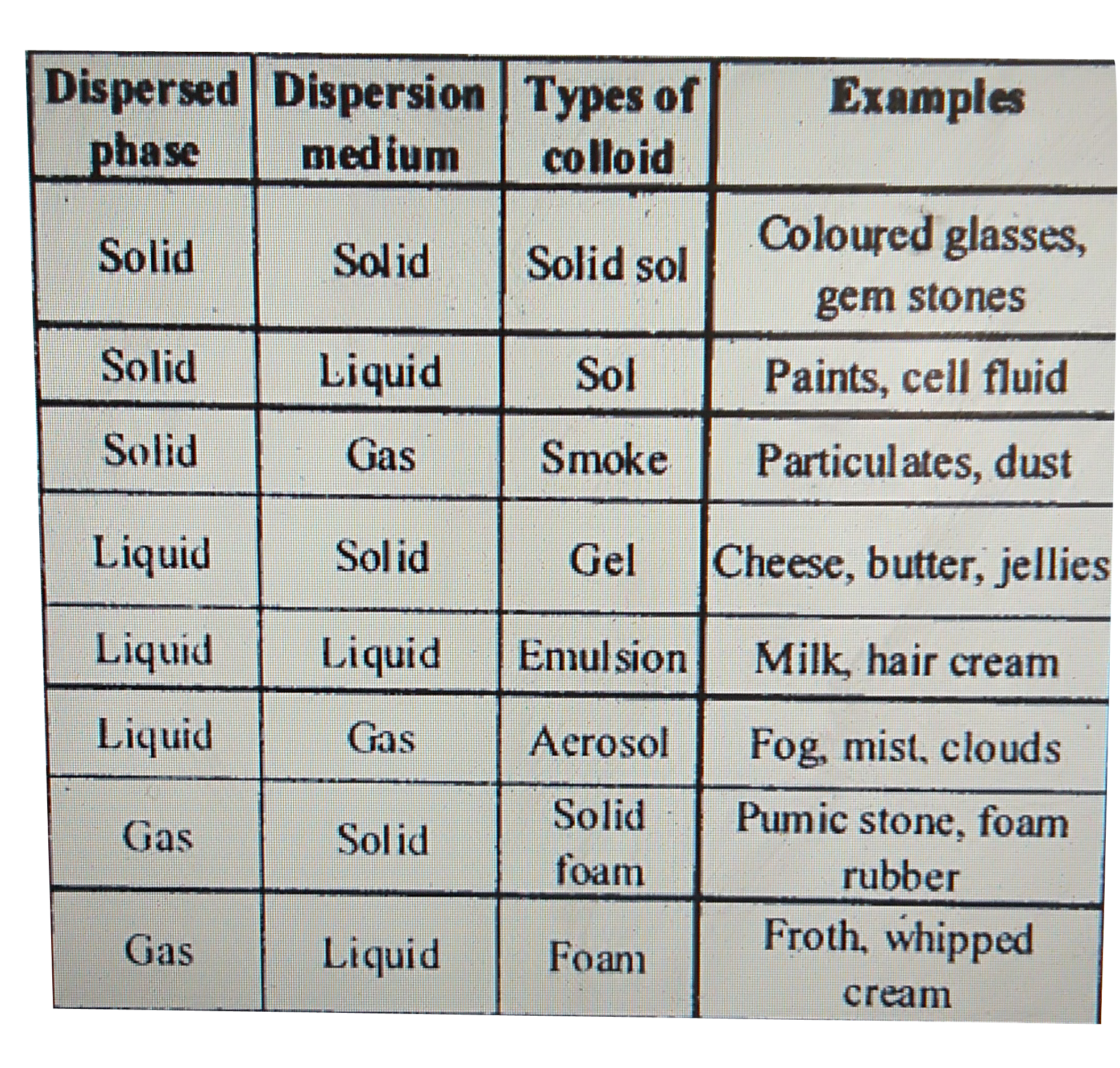How are colloids classified on the basis of
(i) physical states of components
(ii) nature of dispersed phase and
(iii) Interaction between dispersed phase and dispersion medium?
Video Solution
Text Solution
(i) Colloids can be classified into eight types depending upon the physical state of the dispersed phase and the dispersion medium.

(ii) Depending upon the type of the particles of the dispersed phase, colloids are classified as: Multimolecules, macro-molecular and associated colloids
(a) Multimolecular colloids: The colloids in which the colloidal particles consist of aggregates of atoms or small molecules are called multimolecular colloids.
For example gold sol, sulphur sol etc.
(b) Macromolecular colloids. The colloids in which large particles of colloidal range having the molecular masses are dissolved in a suitable liquid are called macromolecular colloids. Example proteins, strach and cellulose form macromolecular colloids.
(c) Associated colloids (Micelles). Those colloids which behave as normal strong electrolyte at low concentrated but show colloidal properties at high concentration due to the formation of aggregated particles of colloidal dimensions. Such substances are also referred to as associated colloids.
(iii) (a) Lyophilic colloids (solvent loving) are those substances that directly pass into the colloidal state when brought in contact with the solvent, e.g., proteins, strach, rubber, etc.
These sols are quite stable because of the strong attractive forces between the particles of dispersed phase and dispersion medium.
(b) Lyophobic colloids (solvent hating) are those substances that do not form the colloidal sol readily when mixed with the dispersion medium. These sols are less stable than the lyophilic sols.
|
Topper's Solved these Questions
Similar Questions
Knowledge Check
Dispersed phase and sispersion medium for fog are :
Asolid , liquidBliquid, liquidCliquid, gasDgas, liquid
Write the dispersed phase and dispersion medium of milk.
View SolutionWrite the dispersed phase and dispersion medium of smoke.
View SolutionWhat are the dispersed phase and dispersion medium in milk
View SolutionWrite the dispersed phase and dispersion medium of paints ?
View SolutionHow are the colloidal solutions classified on the the basis of physical states of the dispersed phase and dispersion medium ?
View SolutionWhat is dispersed phase and dispersion medium in a colloid ?
View SolutionWhat are the physical states of dispersed phase and dispersion medium of froth.
View Solution
